After a short briefing in the morning the adventure begins with the drive in your 4x4 Land Cruiser towards the second highest mountain in Africa – Mount Kenya. Here, you will visit Ol Pejeta Conservancy which offers a stunning view of Mount Kenya, if the weather permits. This conservancy is home to a considerable number of predators and plays an essential role in the conservation of the black rhino in East Africa. It prides itself in being home to large populations of the endangered species. It is also the only place in Kenya where you can see chimpanzees. The sanctuary is home to abused and orphaned chimpanzees from West and Central Africa. To top it all off, at Ol Pejeta Conservancy chances are that you will spot the very rare African wild dog. You will spend the night at the Sweetwater Serena Camp.
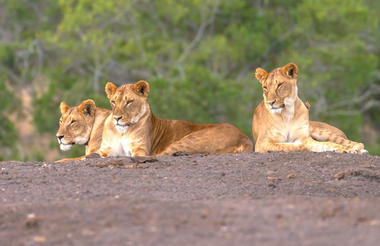
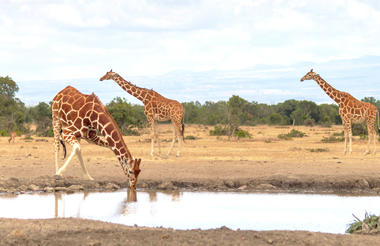
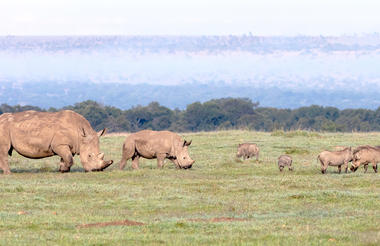
Energised by a hearty breakfast, you will embark on a short game drive in the early morning before leaving the Mount Kenya region and heading towards the Great Rift Valley. On your way, you will stop in Nyahururu at Kenya’s largest waterfall, which is an impressive 72 metres high. After a short break, you continue to Lake Nakuru National Park. The alkaline lake attracts huge colonies of flamingos each year. The spirulina algae, the flamingos’ main food source, colours their feathers in the distinctive pink colour. Millions of birds paint the shores of the lake in a pink hue and seeing them rise into the sky in their thousands is a sight you will never forget. The number of flamingos at the lake varies depending on the water levels and salt concentration. Another highlight of this national park are the black and white rhinos which call Lake Nakuru home. You can also spot large herds of buffaloes, water bucks, hippos and many types of gazelles in the park. The forest of yellow fever trees at the lakeside offers shade, making it the ideal hunting grounds for leopards. You will spend the night at Flamingo Hill Tented Camp.
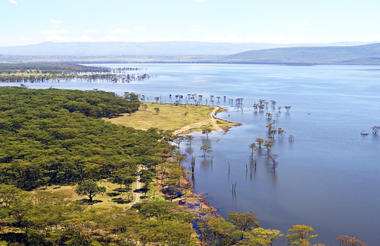
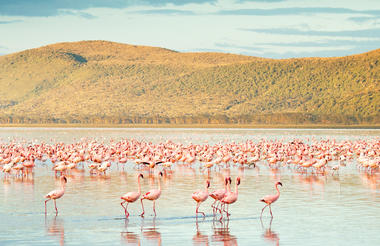
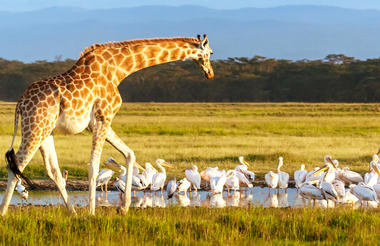
After breakfast, there will be enough time for one last game drive at Lake Nakuru National Park before you head towards Lake Naivasha. Lake Naivasha is one of the few fresh water lakes in the Great Rift Valley, while most lakes in this region are alkaline. The shores of the lake are green year-round and a refreshing change from the often dry savannahs. You can see zebras, small gazelles and giraffes at the shores. Around noon you will make a trip to Crescent Island, a small private conservancy. You can go on a walking safari, a truly unique experience, watching wildlife from up close. You will overnight at the Naivasha Sopa Lodge.
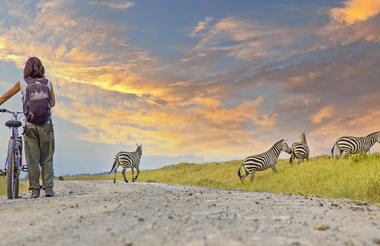
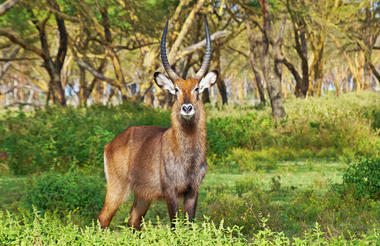
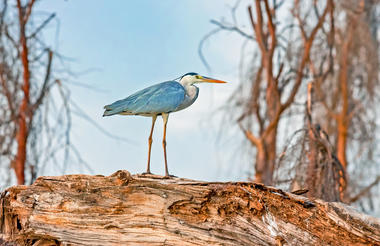
In the early morning, you will make your way to the one and only Masai Mara. There is lots to see on your 5-hour drive: you will pass the inactive volcanoes, Mount Longonot and Mount Suswa, then drive deeper and deeper into the land of the Masai. In the afternoon, you will arrive in the Masai Mara Game Reserve and embark on your first game drive through this absolutely stunning part of Kenya. The Masai Mara is known for its large wildlife populations and home to the Big Five. Since animals don’t adhere to border control, you can spot wildlife in the surrounding areas as well. You will spend the night at Mara West Campin a remote area just outside of the Mara Triangle.
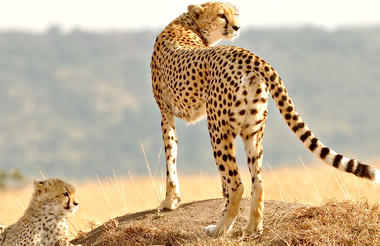
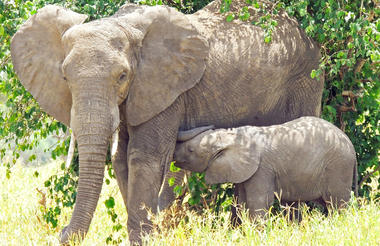
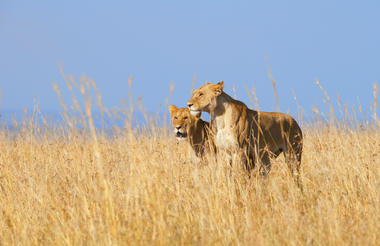
Today you will have plenty of time for extensive game drives through the beautiful Masai Mara, including a stop at the Mara River. The Masai Mara is host to the “greatest wildlife show on earth”: The Great Migration. Millions of wildebeest and zebras migrate from the southern Serengeti in Tanzania to the savannahs of the Masai Mara. The animals follow the rain, always in search of fresh grass. These large herds of ungulates attract a great number of predators: lions, leopards, cheetahs and hyenas lurk in the shadows for their next meal. The highlight of the Great Migration occurs when the herds have to cross the Mara River. Many hungry crocodiles wait in the rivers, turning the waters into a death trap for some wildebeest and into a spectacular show of natural forces. A safari in the Masai Mara is a unique experience since many animals call the game reserve home year-round. If you have seen the Big Five, you might want to turn your attention to the more than 400 bird species living here. You will spend another night at the Mara West Camp.
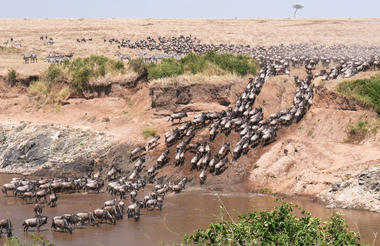
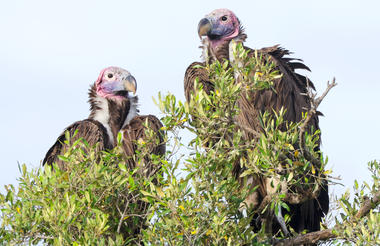
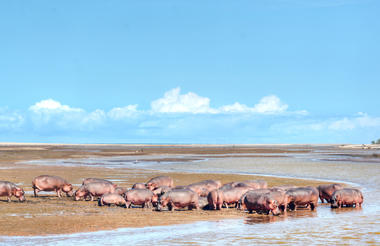
After breakfast, you will leave the Masai Mara region heading towards Nairobi. The bumpy paths of the bush will turn into tarred roads and in the afternoon, you will arrive at your point of departure, the busy capital that is Nairobi. We will drive you to your hotel or the airport where you can say your goodbyes to your safari crew and head home or continue your travels.
Alternatively, you can book a flight straight to Diani Beach right from the airstrip in the Masai Mara. Dust-off from your adventures in the bush and spend a couple of days on the palm-fringed beaches of the Indian ocean. Skipping the long drive on the road, you can sip a cocktail at the beach just hours after your safari trip. Get in touch with us for more details!
**On flights to Diani Beach, luggage is restricted to 15 kg (incl. hand luggage) in a soft bag.**






